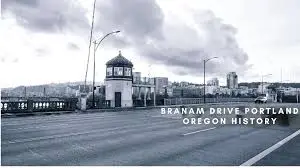The nameBranam Drive in Portland Oregon would not immediately conjure up images of the city’s complicated and rich past. Nonetheless, it functions as a microcosm of the larger stories of community displacement, urban expansion. The continuous pursuit of equity in one of the liveliest cities in America. This blog examines Branam Drive’s historical background, its ties to notable people like Kimberly Branam, and the effects of Portland’s urban regeneration.
The Origins of Portland
We must first examine Portland’s history in order to comprehend the significance of Branam Drive. Asa Lovejoy and William Overton founded Portland in 1843, and since then. It has grown from a tiny community to a thriving metropolis. Since its incorporation in 1851, the city has experienced many changes brought about by population expansion, economic booms, and shifting social dynamics.
The growth of Portland has not been without controversy. Urban regeneration initiatives frequently displaced marginalized communities, especially in the middle of the 20th century. Understanding the current problems affecting communities like those around Branam Drive requires knowledge of this background.
Urban Renewal and Its Consequences
In Portland, the phrase “urban renewal” has frequently been used interchangeably with devastation and eviction. For example, the Portland Development Commission (PDC) implemented aggressive redevelopment tactics in the 1970s, which resulted in the demolition of businesses and residences, mostly in African-American areas. Residents are still impacted by the severe trauma and loss this caused to the community [4].
Branam Drive in Portland Oregon is located in this historical urban regeneration context. Communities are still recovering from the wounds caused by the judgments made decades ago. These neighborhoods have seen a surge of new construction as gentrification has advanced in recent years, many of which do not serve the needs of long-time inhabitants. Rather, they usually give preference to those with greater incomes, which exacerbates problems with affordability and community harmony.
Kimberly Branam: A Catalyst for Change
Since taking over as executive director of Prosper Portland (previously PDC) in 2016, Kimberly Branam has played a crucial role in redressing these past injustices. Under her direction, equitable development initiatives that seek to right historical wrongs and promote inclusive growth. Branam has worked in economic development under former Mayor Sam Adams and served in the Peace Corps.
Branam Drive in Portland Oregon strategy places a strong emphasis on collaboration and community involvement. She acknowledges that previous attempts at urban revitalization frequently ignored local opinions, which had negative effects on underprivileged groups. Under her direction, Prosper Portland has started initiatives to provide affordable housing options and encourage African-American-owned companies. This change reflects a larger dedication to mending the harm caused by earlier policies.
Key Initiatives Under Kimberly Branam
African-American Community Center: The planned African-American Community Center, which aims to mend ties with historically marginalized communities. It is one of Branam’s noteworthy projects. This facility is intended to offer cultural support services in addition to reasonably priced housing.
Equitable Development Strategy: A neighborhood economic development approach centered on racial fairness and avoiding displacement has been implemented by Prosper Portland. The goal of this project is to give groups that have traditionally been left out of decision-making more influence.
Community Engagement: Branam stresses that when planning new developments, it’s critical to listen to the community. Instead of enforcing top-down solutions, Prosper Portland hopes to guarantee that future projects represent the needs and preferences of locals by forming working groups with their input.
The Future of Branam Drive
Branam Drive serves as a reminder of both past errors and potential future developments as urban environments continue to change. Portland’s persistent problems, such as growing rates of homelessness and drug-related problems, highlight the necessity of maintaining attention to fair solutions.
Branam’s leadership demonstrates an awareness that tackling these issues calls for a dedication to social justice and community well-being in addition to financial investment. There is promise for revitalizing neighborhoods like those around Branam Drive by giving inclusive development methods first priority and avoiding past mistakes.
Conclusion
Branam Drive represents important topics in Portland’s history, such as the effects of urban renewal on local communities and the continuous fight for equality in development techniques, even though it is not a historic site in and of itself. It is becoming more and more obvious that comprehending our past is crucial to constructing a better future as leaders like Kimberly Branam strive to create a more inclusive cityscape.
In conclusion, even though Branam Drive may not yet be a significant part of Portland’s history, its relationship to more general socioeconomic problems makes it an important topic of conversation as we negotiate the challenges of urban expansion and community resilience in this dynamic city.
FAQs about Branam Drive, Portland, Oregon
The main reason Branam Drive is well-known is because of its association with Portland’s current urban development initiatives, especially those that attempt to rectify past injustices experienced by underprivileged groups.
As the former executive director of Prosper Portland, Kimberly Branam worked to address the negative effects of previous urban renewal initiatives by emphasizing community involvement and fair development practices.
Historically, Portland’s urban renewal has resulted in the eviction of underprivileged communities, especially African-Americans, creating serious social and economic problems that still affect these areas today.
The planned African-American Community Center and equitable development plans that promote small businesses and avoid displacement are important projects.
The planned African-American Community Center and equitable development plans that promote small businesses and avoid displacement are important projects.



